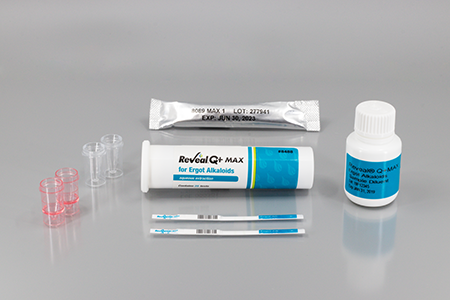Inside BENEO’s new pulse plant: pioneering sustainable protein from faba beans
Neogen’s new Reveal® Q+ MAX for Ergot Alkaloids delivers precise quantitative results
US based Neogen Corporation has announced that it has developed a quick and simple lateral flow test for ergot alkaloids, which are natural toxins produced by a fungus that commonly infects rye and wheat. Ingestion of ergot alkaloids can cause ergotism, a dangerous disease in humans and animals.
Neogen’s new Reveal® Q+ MAX for Ergot Alkaloids delivers precise quantitative results in the range of 50 to 5,000 parts per billion (ppb) in only 8 minutes after extraction. This new test is the first for ergot alkaloids in the simple rapid lateral flow format, and is compatible for use with Neogen’s innovative Raptor® testing platform.
“The advanced technology of this test truly changes everything about testing for ergot alkaloids,” said John Adent, Neogen’s president and CEO. “Until we developed this product, the only options that testers had were complex laboratory methods or imprecise visual tests. If you use one of our Raptor testing platforms, accurately testing for ergot alkaloids, or many other natural toxins, doesn’t get any easier.”
Because of the well-established risk to human and animal health posed by ergot alkaloids, legislation regulating the toxins is expected soon in the European Union. The new test was developed, in part, to help cereal producers and processors meet new requirements that the new legislation will impose. Ergotism was historically known as “Holy Fire” due to the painful burning sensation it can cause, which was perceived as a punishment from God, and is thought to have been the cause of countless deaths in the Middle Ages.
Neogen’s Reveal Q+ MAX tests for natural toxins provide rapid, fully quantitative test results — and use only water for extraction, as opposed to other systems that use hazardous materials, such as methanol, for extraction. The Raptor testing platforms control the timing, temperature and reading of the test strips, allowing testers to simply add a sample and walk away. They also protect the integrity and consistency of testing data by processing and analyzing results without additional operator input.

